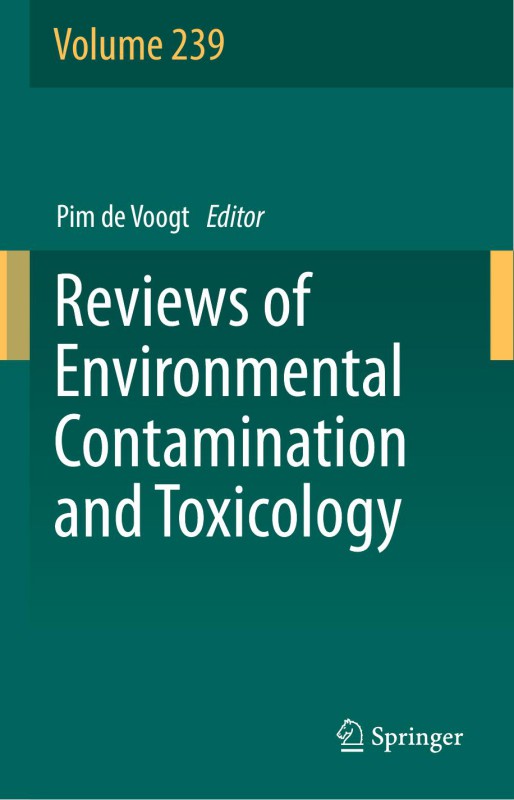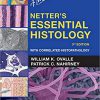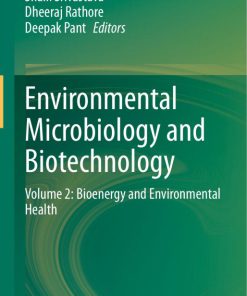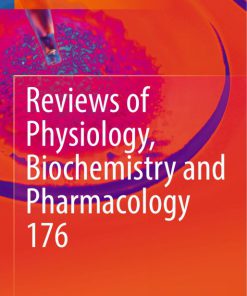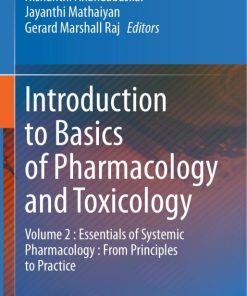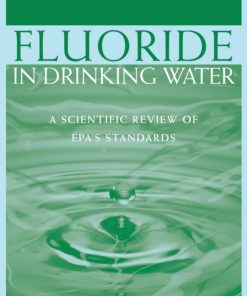Reviews of Environmental Contamination and Toxicology Volume 239 1st edition by Pim de Voogt ISBN 3319339710 9783319339719
$50.00 Original price was: $50.00.$25.00Current price is: $25.00.
Authors:Pim de Voogt , Tags:(Reviews of Environmental Contamination and Toxicology 239) , Author sort:Voogt, Pim de , Published:Published:Sep 2016 , Publisher:Springer International Publishing (2017)
SKU: EB-2212
Category: eBook PDF
Tags: Contamination, Environmental, Pim de Voogt, Reviews, Toxicology, Volume 239 1st
Reviews of Environmental Contamination and Toxicology Volume 239 1st edition by Pim de Voogt – Ebook PDF Instant Download/Delivery. 3319339710, 978-3319339719
Full download Reviews of Environmental Contamination and Toxicology Volume 239 1st Edition after payment
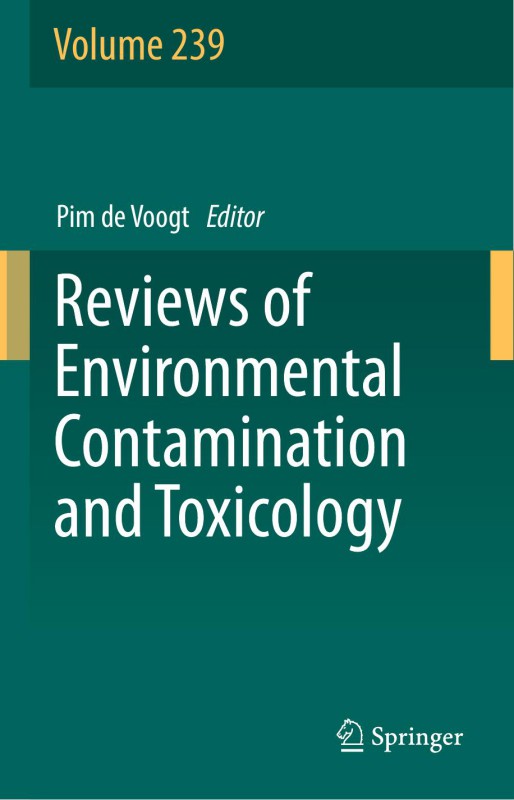
Product details:
ISBN 10: 3319339710
ISBN 13: 978-3319339719
Author: Pim de Voogt
Reviews of Environmental Contamination and Toxicology attempts to provide concise, critical reviews of timely advances, philosophy and significant areas of accomplished or needed endeavor in the total field of xenobiotics, in any segment of the environment, as well as toxicological implications.
Reviews of Environmental Contamination and Toxicology Volume 239 1st Table of contents:
1. Sediment Risk Assessment and Ecotoxicology
- Introduction
- Benthic Ecology
- Ecosystem Functions and Services Provided by Benthic Organisms
- 3.1 Dealing with Vulnerable Key Species
- Specific Protection Goals for Sediment Risk Assessment
- Triggers for Prospective Sediment Risk Assessment in European Regulatory Frameworks
- Data Requirements for Effect Assessment
- 6.1 Toxicity Data Requirements in European Regulatory Frameworks
- 6.2 Main Differences Between Existing OECD, ASTM and US-EPA Guidelines
- 6.3 Recommendation for a Suite of Benthic Test Species
- Factors Affecting the Exposure of Sediment-Dwelling Organisms
- 7.1 Chemical Factors
- 7.2 Biological Factors
- 7.3 Spatial Factors
- 7.4 Temporal Factors
- Exposure Concentration in Sediment ERA
- 8.1 The Ecotoxicologically Relevant Concentration for Sediment-Dwelling Organisms
- 8.2 Overview of Fate and Exposure Models
- 8.3 Linking Exposure to Effects in Sediment ERA
- Tiered Effect Assessment for Benthic Test Species and Spiked Sediments
- 9.1 Tiered Approach
- 9.2 Tier-0 Effect Assessment Based on Equilibrium Partitioning
- 9.3 Tier-1 Effect Assessment Based on Protocol Tests for Benthic Invertebrates and Macrophytes
- 9.4 Tier-2 Effect Assessment Based on Laboratory Toxicity Data for Standard and Additional Benthic Invertebrates
- 9.4.1 Geometric Mean Approach
- 9.4.2 Species Sensitivity Distribution (SSD) Approach
- 9.5 Tier-3 Approach Based on Semi-Field Experiments
- 9.6 Tier-4 Approach Based on Field Studies
- 9.7 Effect Models to Supplement the Experimental Tiers
- 9.7.1 Individual Level Models
- 9.7.2 Population-Level Models
- 9.7.3 Ecosystem Level Models
- 9.7.4 Spatially Explicit Models
- 9.8 Effect Assessment for Vertebrates
- 9.9 Effect Assessment for Microorganisms
- Sediment Effect Assessment: Case Studies
- 10.1 The Pharmaceutical Ivermectin
- 10.1.1 Evaluation of Standard and Additional Toxicity Data for Pelagic Organisms and Ivermectin
- 10.1.2 Tier-0 Effect Assessment for Ivermectin Based on Equilibrium Partitioning
- 10.1.3 Tier-1 Effect Assessment for Benthic Organisms and Ivermectin
- 10.1.4 Tier-2 Effect Assessment for Ivermectin Based on Standard and Additional Test Species
- Geometric Mean Approach
- Species Sensitivity Distribution Approach
- 10.1.5 Tier-3 Effect Assessment for Ivermectin Based on Micro/Mesocosm Experiments
- 10.1.6 Conclusions from the Ivermectin Toxicity Data for Benthic Organisms
- 10.2 The Insecticide Chlorpyrifos
- 10.2.1 Evaluation of Standard and Additional Toxicity Data for Pelagic Organisms and Chlorpyrifos
- 10.2.2 Tier-0 Effect Assessment for Chlorpyrifos Based on Equilibrium Partitioning
- 10.2.3 Tier-1 Effect Assessment for Benthic Organisms and Chlorpyrifos
- 10.2.4 Tier-2 Effect Assessment for Chlorpyrifos Based on Standard and Additional Test Species
- Geometric Mean Approach
- Species Sensitivity Distribution Approach
- 10.2.5 Tier-3 Effect Assessment for Chlorpyrifos Based on Micro/Mesocosm Experiments
- 10.2.6 Conclusions from the Chlorpyrifos Toxicity Data for Benthic Organisms
- 10.3 The Biocide Tributyltin
- 10.3.1 Evaluation of Standard and Additional Toxicity Data for Pelagic Organisms and Tributyltin
- 10.3.2 Tier-0 Effect Assessment for Tributyltin Based on Equilibrium Partitioning
- 10.3.3 Tier-1 Effect Assessment for Benthic Organisms and Tributyltin
- 10.3.4 Tier-2 Effect Assessment for Tributyltin Based on Standard and Additional Test Species
- Geometric Mean Approach
- Species Sensitivity Distribution Approach
- 10.3.5 Tier-3 Effect Assessment for Tributyltin Based on Micro/Mesocosm Experiments
- 10.3.6 Conclusions from the Tributyltin Toxicity Data for Benthic Organisms
- 10.4 Main Outcomes from the Case Studies
- 10.1 The Pharmaceutical Ivermectin
- Main Recommendations for Prospective ERA for Sediment-Bound Organic Chemicals and Outlook
- 11.1 Specific Protection Goals
- 11.2 Triggers for Prospective Sediment ERA
- 11.3 Linking Exposure to Effects
- 11.4 The Tiered Approach in Effect Assessment
- Summary
- Appendices
- Appendix 1: List of Workshop Participants
- Appendix 2: List of Abbreviations
- References
2. Pollution Levels in Antarctica
- Introduction
- The Presence of Pollutants in Antarctica’s Environment
- 2.1 Abiotic Environment
- 2.1.1 Air
- 2.1.2 Snow and Ice
- 2.1.3 Soil and Permafrost
- 2.1.4 Catchment Areas
- 2.1.5 Ocean, Seas, and Bottom Sediments
- 2.2 Biotic Environment
- 2.2.1 Plants
- 2.2.2 Crustaceans, Benthic Organisms, and Fishes
- 2.2.3 Seabirds
- 2.2.4 Marine Mammals
- 2.1 Abiotic Environment
- Types of Pollutants Present in Antarctica’s Environment
- Detailed Information Pertaining to Analytical Research in Antarctica
- 4.1 History of Research on the Chemical Composition of Samples from Antarctica
- 4.2 Pollution Concentration Levels Over Decades
- 4.3 Analytical Techniques in the Study of the Antarctic Environment
- 4.4 Impact of Research Station Activities on Pollution Levels
- Summary and Conclusions
- References
3. Ecotoxicological Investigations Using Earthworms
- Introduction
- Role of Earthworms in Soil Ecosystems
- Advances in Earthworm Ecotoxicology
- Biomarker Responses and the Issue of Linkage to Higher-Level Responses
- 4.1 Biomarkers
- 4.2 Changes at Different Levels of Biological Organization
- 4.3 Establishing the Link Between Responses at Different Levels of Biological Complexity
- Effects of Mixtures
- 5.1 Environmental Pollutants as Mixtures
- 5.2 Effects of Mixtures on Earthworms
- 5.3 Assessment of Effects of Mixtures
- Occurrence of Hormetic Effect
- 6.1 Hormesis
- 6.2 Hormetic Effect in Earthworms
- 6.3 Hormetic Effect in Ecotoxicological Investigations
- Inclusion of Microcosmic Systems in Ecotoxicological Investigations
- 7.1 Characteristics of Soil Microcosm
- 7.2 Soil Microcosm in Ecotoxicological Studies
- Effects of Temperature Change on Toxic Effects of Pollutants and Biomarker Responses in Earthworms
- 8.1 Effects of Temperature Change
- 8.2 Interactions Between Temperature Change and Pollutant Toxicity to Earthworms
- 8.3 The Need for Further Assessment of the Effect of Temperature on Pollutant Toxicity to Earthworms
People also search for Reviews of Environmental Contamination and Toxicology Volume 239 1st:
reviews of environmental contamination and toxicology journal abbreviation
environmental review
reviews of environmental contamination and toxicology
what is environmental contamination
environmental contaminants reviews
You may also like…
Sale!
Sale!
Sale!
Sale!
Sale!
Sale!
Sale!
Sale!
Sale!

